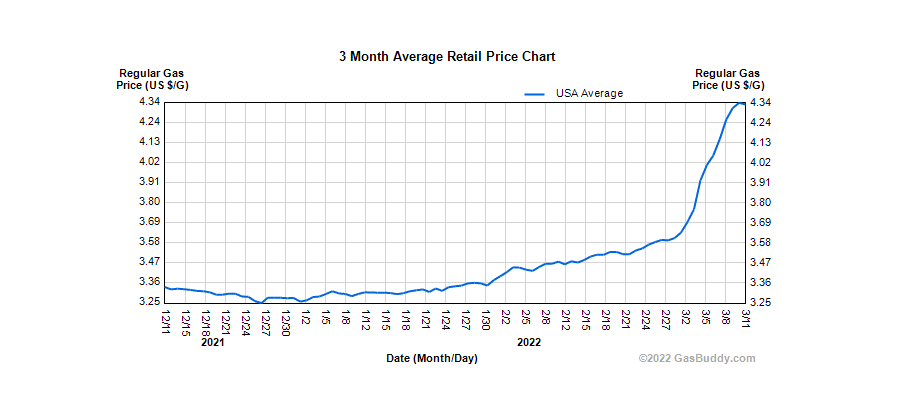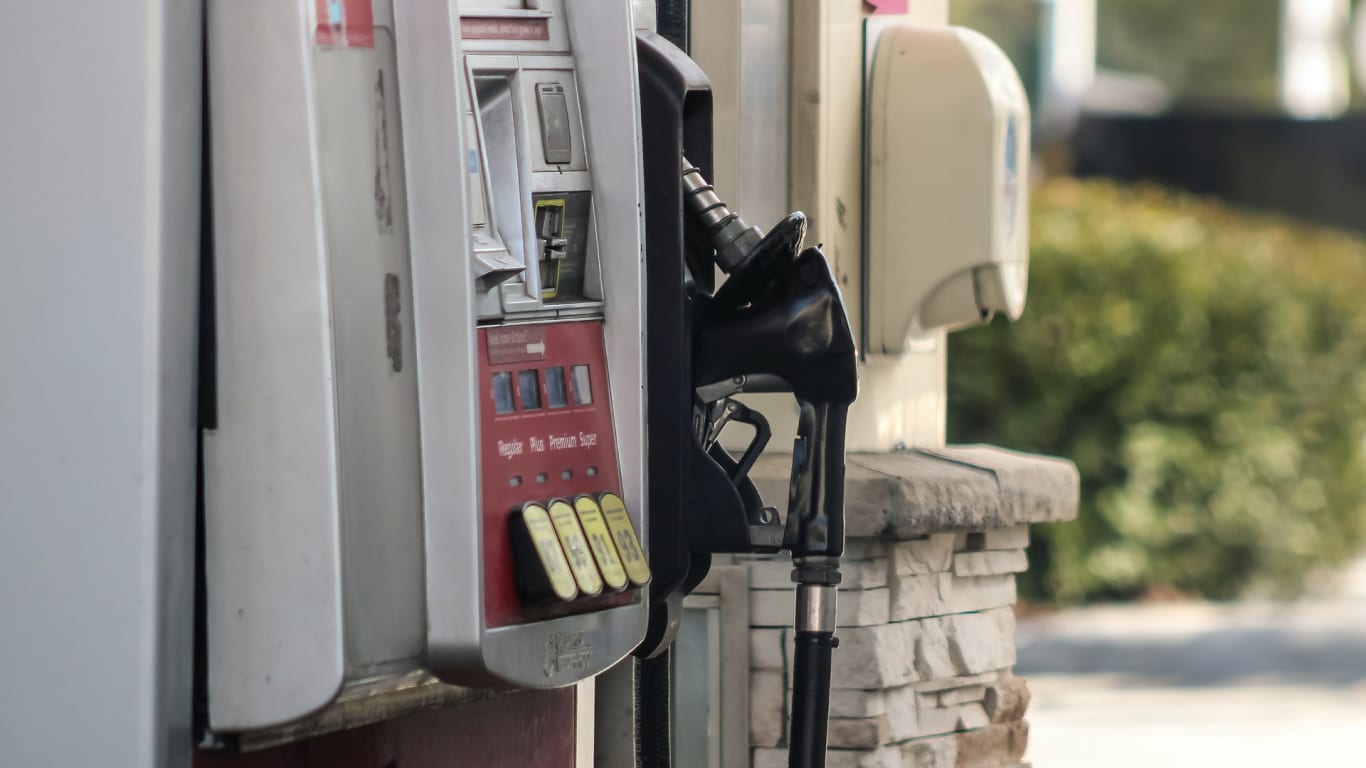In the trucking industry, maximizing a truck’s fuel efficiency is a key way to become a better, more successful business. With oil prices fluctuating drastically due to recent geopolitical events, America has seen prices at the pump rising faster than ever. See the graph below:

This is not good news for the logistics industry as a whole, but it especially hurts for smaller owner operators and fleet businesses just trying to get by. Semi-trucks average roughly 6.5 miles per gallon (MPG) due to their heavy weight. Terrain differences, such as hills or mountains, can also impact truck fuel economy driving it up or down wildly leading to unstable MPG.
Luckily there are some tried-and-true methods that your company can enact and mitigate the effects of rising fuel costs. We have researched and shared a variety of these insights with the owner operators that we work with and have yielded promising results. Now, we are sharing them publicly to help other companies navigate their way through this expensive mess.
Maintain Your Truck
It sounds like common-sense, but it is never a bad idea to check your truck’s NOx and oxygen sensors. A faulty sensor can easily drive your fuel efficiency down. Simple maintenance can go a long way on the road to increasing your MPG.
Regulate Your Speed
Larger trucking companies across the country have found that speeds in excess of 65mph have diminishing returns in fuel savings. This revelation applies to smaller trucking companies too. Maintaining a steady speed limit is important to getting more out of your truck.
Utilize Momentum
As heavy as semis are, building momentum can be an asset when leveraged properly over the road. For example, you can simply coast downhill after reaching a hilltop. Or when you are coming toward a stop you can slow long before the approach and apply brakes minimally in order to continue on with momentum. The same principle applies for traffic lights and exits.
Upgrade Outdated Equipment
In the most drastic cases, it may be best to upgrade your old model truck for something more fuel-efficient. Newer automatic trucks generally get higher MPG than older manuals. We have seen instances where a driver was getting around 5mpg on average and upgraded to roughly 9mpg with a newer truck.
Avoid Overfilling Your Tank
When you fill your truck’s fuel tank completely, it can heat up from sunlight or the engine causing it to overflow. This is not only dangerous to other drivers but is wasteful. A full tank also adds to your truck’s overall weight, lowering MPG.
Avoid Idling
By rule of thumb, a single hour of idling will burn a gallon of fuel. Never leave your truck sitting idle for more than 5 minutes of time. Whether you are running a quick errand or just do not want to restart the truck, it is always best practice to simply turn it off.
Monitor Your Tires
Research has found that for every 1psi drop in tire pressure, gas mileage decreases by 0.3%. Properly inflating your tires saves fuel and can also increase their lifespan.
By implementing all or even some of these strategies, owner operators and smaller fleet companies can fight the rising cost of fuel and make you a better driver in the long run. We hope this has helped you as much as it has helped the companies that we dispatch for. If you think something is missing from our list or that we should add another tip, please reach out to us. We will be more than happy to add it.
